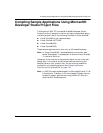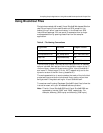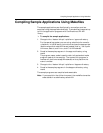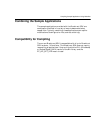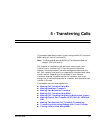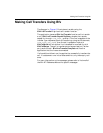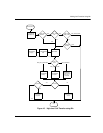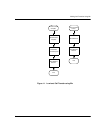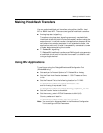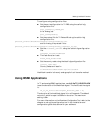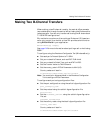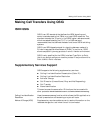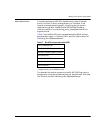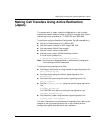
Making Hookflash Transfers
November 2009 180
Making Hookflash Transfers
You can make hookflash call transfers using either the Bfv- level
API or BSMI-level API. There are two types of hookflash transfers:
Analog loop start signaling
Transfers using loop start signaling commonly use hookflash.
Hookflash allows for both blind and attended transfers using the
same channel. In a blind transfer, the application drops out of the
call before the transfer completes. In an attended transfer, the
application waits until the call is successfully connected to a new
number before completing the transfer.
T1 Robbed Bit signaling
T1 Robbed Bit hookflash transfers use E&M signaling to generate
a hookflash (wink) and initiate dial tone recall to transfer a call
using a single channel.
Using Bfv Applications
To configure using the Dialogic® Brooktrout® Configuration Tool
(Windows® only):
Set each port’s Protocol Options to T1 Robbed Bit or Analog.
Set the Flash Hook Duration between 1 - 500. These are 10ms
units.
Set the Protocol File to the following location for T1 RBS:
C:\Brooktrout\Boston\config\winkstart.lec
and for Analog, the protocol file is:
C:\Brooktrout\Boston\config\analog_loopstart_us.lec
Set the Transfer Variant to Hookflash.
Set the country_code in BTCall Parameters to 0010 (US).
Country codes are listed in:
C:\Brooktrout\Boston\bfv.api\inc\ccode.h
Note: You must be in Advanced Mode in the Brooktrout Configuration
Tool
to configure BTCall Parameters.



